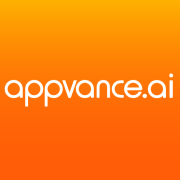Functional Testing Tools are crucial for ensuring software performs as expected by verifying each function against requirements. These tools help detect bugs and improve software reliability and user satisfaction.
Functional Testing Tools evaluate software by checking user interfaces, APIs, databases, security, and client/server applications. They integrate with agile and continuous integration processes to maintain software quality across different environments and platforms. They offer automation capabilities, reducing time and effort needed for repetitive test cases, enabling testers to focus on more complex scenarios.
What are the critical features?In industries like finance and healthcare, implementing Functional Testing Tools ensures regulatory compliance by thoroughly testing software functionalities and processes. In e-commerce, these tools validate transaction flows and security measures, thus protecting customer data and enhancing shopping experiences. Technological companies utilize these tools to maintain high standards of software development, ensuring customer satisfaction and reducing post-deployment failures.
Functional Testing Tools assist organizations in delivering reliable software that meets user expectations and business demands. By automating tests and providing comprehensive validation, these tools reduce the risk of software defects, enhance functionality, and support the smooth operation of business processes.























































As the name itself implies, manual testing is the process of testing software manually, while searching for bugs or anomalies in an application. With manual testing, testers follow a written test plan that describes the set of scenarios and steps to execute tests and verify the expected results. In contrast, functional testing allows you to test the software using a variety of methods including unit testing, integration testing, end to end testing, regression testing, and more. Unlike manual testing, functional testing can be done manually or by using automations.
UAT, otherwise referred to as user acceptance testing, is testing completed by end users or by the paying customer, whereas functional testing is testing done from a functional viewpoint by a business. In addition, UAT uses a series of different test steps, which verify whether specific requirements are working for the user. On the other hand, functional testing tests specific requirements and specifications of the software. While functional tests test the function of software and what it does, UATs test against some criteria of acceptance.
Functional testing is critical in validating the quality and functionality of the software. Functional tests are also important because they allow quality assurance teams to verify the software functionality based on software requirements specification (SRS) and ensure the system functions as per user specifications. Additionally, functional testing helps determine whether the system is fixed for release and is error-free.
UI testing, also known as GUI (graphical user interface) testing, is a form of functional testing that takes into consideration the look, feel, and ease-of-use of an application, mainly to meet a customer’s demands. Because it tests the aspects of any software that a user comes into contact with, it requires testing the visual elements to verify that they are functioning according to requirements in terms of functionality and performance, and therefore is considered to be a type of functional testing.
In 2023, the leading Functional Testing Tools include Selenium, Appium, and TestComplete. These tools offer robust automation capabilities, supporting various programming languages and platforms. For web applications, Selenium is highly favored for its flexibility and open-source nature. Appium is popular for mobile testing, offering cross-platform support. TestComplete provides a comprehensive suite including record-and-playback features and script customization, making it ideal for teams looking for a mix of automation and manual testing options.
How do Functional Testing Tools improve software quality?Functional Testing Tools enhance software quality by automating repetitive test scenarios, ensuring consistent test execution, and reducing human error. By using these tools, you can simulate real-world user interactions and verify that all functionalities operate as expected. They help in early detection of bugs, improving developer efficiency, and maintaining software reliability. Additionally, automated test scripts save time, allowing your team to focus on more complex testing efforts and enhancing the overall user experience.
What factors should you consider when choosing a Functional Testing Tool?When selecting a Functional Testing Tool, consider factors like compatibility with your application’s technology stack, ease of use, and support for different test environments like web, mobile, or desktop. Evaluate the tool’s ability for integration with your existing development workflows, such as CI/CD pipelines. Check for scripting language support that matches your team's expertise and availability of community or vendor support. Cost, licensing, and the ability to scale with your project as it grows are also crucial considerations.
Are AI-powered Functional Testing Tools worth the investment?AI-powered Functional Testing Tools are increasingly becoming valuable as they offer intelligent test automation features like self-healing test scripts, deeper predictive analysis, and maintenance of large test suites. They reduce manual intervention in script updates by automatically adapting to UI changes. For large-scale applications, where speed and accuracy are critical, investing in AI-driven tools can significantly cut down on testing time, allow faster release cycles, and help in better management of complex test scenarios, making them a worthwhile investment for businesses aiming for agility.
How can you ensure the success of implementing Functional Testing Tools?To ensure successful implementation, start by delineating robust test strategies and objectives. Train your team effectively in using the new tools and integrating them into your existing processes. Establish a continuous feedback loop to identify bottlenecks or any resistance faced during implementation. Regularly review and update test cases to align with new application features. Establish effective collaboration between testers and developers to enhance bug tracking and fixing processes. Use metrics to track effectiveness and make necessary adjustments to your testing strategy.